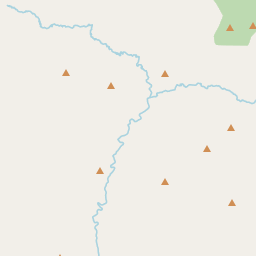Rough Roads & Wrecks
Historical marker location:
Avery, Idaho
( Marker can be reached from Moon Pass Road (Federal Road 456) 0.4 miles south of Loop Creek Road (Federal Road 326).)







© OpenStreetMap contributors
Loading...
Searching for other points of interest within 3 miles of this location.Idaho's name is derived from the Native American word "Ee-da-ho" which means "Gem of the Mountains." This name was suggested by a local lobbyist named George M. Willing, and it was officially adopted as the state's name in 1863.
About Shoshone County
Shoshone County Timeline
Shoshone County, located in the northern part of Idaho, has a rich and diverse history that dates back to ancient times. The earliest inhabitants of the region were the Native American tribes, including the Shoshone and Coeur d'Alene, who had lived in the area for thousands of years. These tribes thrived on the abundant natural resources, such as fish, game, and plants.
The arrival of European settlers in the 19th century brought significant changes to Shoshone County. In the mid-1800s, the discovery of gold attracted thousands of miners to the region, leading to the establishment of mining communities like Murray and Burke. These towns experienced rapid growth as mining activities boomed, and the county became a major producer of gold, silver, lead, and zinc.
The mining industry continued to be the backbone of Shoshone County's economy throughout the late 19th and early 20th centuries. Companies like the Bunker Hill Mining Company and the Sunshine Mining Company operated large-scale mining operations in the area, employing thousands of workers. However, the county also faced numerous challenges, including labor disputes and the fluctuating prices of minerals, which led to economic downturns and recessions.
In recent decades, the mining industry has declined, and Shoshone County has had to adapt to new economic realities. The county now focuses on a diversified economy, including tourism, outdoor recreation, and small-scale agriculture. Today, Shoshone County is known for its beautiful natural landscapes, including the stunning Silver Valley, and its rich cultural heritage. The county has preserved historic buildings and sites, attracting visitors interested in its history and offering opportunities for outdoor activities like hiking, fishing, and skiing.
The arrival of European settlers in the 19th century brought significant changes to Shoshone County. In the mid-1800s, the discovery of gold attracted thousands of miners to the region, leading to the establishment of mining communities like Murray and Burke. These towns experienced rapid growth as mining activities boomed, and the county became a major producer of gold, silver, lead, and zinc.
The mining industry continued to be the backbone of Shoshone County's economy throughout the late 19th and early 20th centuries. Companies like the Bunker Hill Mining Company and the Sunshine Mining Company operated large-scale mining operations in the area, employing thousands of workers. However, the county also faced numerous challenges, including labor disputes and the fluctuating prices of minerals, which led to economic downturns and recessions.
In recent decades, the mining industry has declined, and Shoshone County has had to adapt to new economic realities. The county now focuses on a diversified economy, including tourism, outdoor recreation, and small-scale agriculture. Today, Shoshone County is known for its beautiful natural landscapes, including the stunning Silver Valley, and its rich cultural heritage. The county has preserved historic buildings and sites, attracting visitors interested in its history and offering opportunities for outdoor activities like hiking, fishing, and skiing.
Shoshone County Timeline
This timeline provides a condensed summary of the historical journey of Shoshone County, Idaho.
- 1805 - The Lewis and Clark expedition passes through the area.
- 1824 - The fur trade brings trappers and traders to the region.
- 1860 - Gold is discovered in the region, leading to a gold rush.
- 1861 - Shoshone County is established as one of the first counties in Idaho Territory.
- 1884 - The town of Wallace is founded and becomes the county seat.
- 1887 - The Bunker Hill and Sullivan Mine is established, becoming one of the largest silver mines in the world.
- 1910 - The great fires of 1910 devastate the area, including several towns in Shoshone County.
- 1930s - The mining industry declines, leading to an economic downturn.
- 1980s - Environmental concerns and the closure of mines further impact the county's economy.
- Present - Shoshone County remains a rural area with a diverse economy centered around tourism, timber, and recreation.